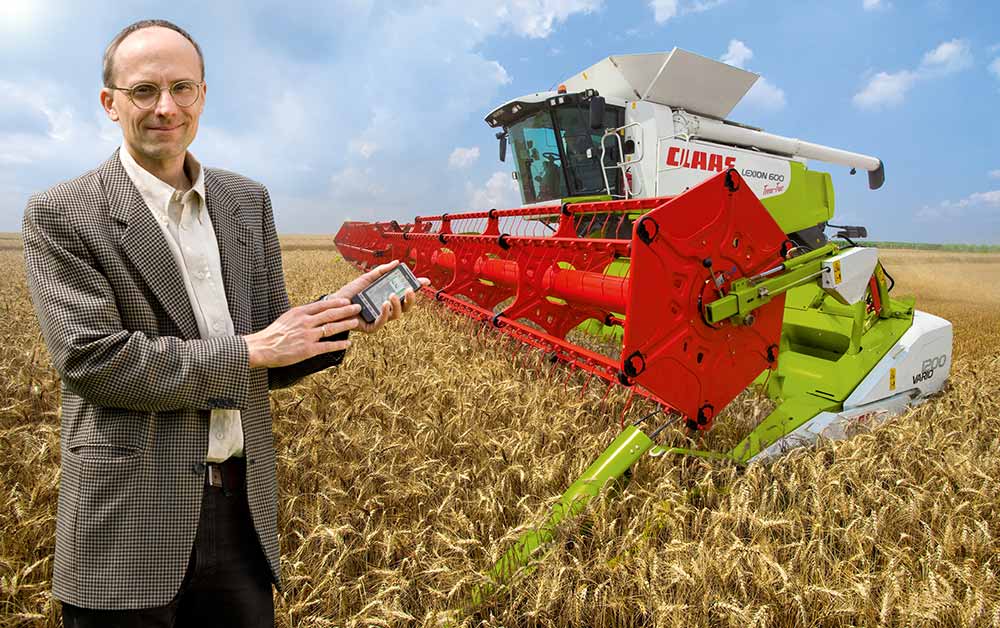S2P
- S2P
- 01.03.2010 - 28.02.2012
- European Union, State of North Rhine-Westphalia
- ScienceToBusiness PreSeed competition of the state of NRW, European Regional Development Fund (ERDF)
- 275,000 euros
- Prof. Dr. Wilhelm Nüßer
- Michael Eberhardt, Daniel Hintze, Thomas Kersting, Sebastian Scholz
How mobile devices can be integrated into operational business processes
Project S2P (System to Process): Universal infrastructure for the integration of context-sensitive systems into business processes
The S2P project was based on the SatNaviServ project at the FHDW and combined two IT trends in a new way. On the one hand, mobile and embedded systems are equipped with high computing power, a large number of sensors for measuring environmental variables and the ability to interact. In most cases, they are also networked with other systems and often allow software to be loaded dynamically. This remarkable performance has hardly been used to date. In particular, these devices have hardly been integrated into company processes. The focus was therefore on the question of how mobile and thus context-dependent systems such as cell phones, PDAs, but also agricultural or construction machinery can be integrated into business processes in a largely automated manner. With this idea, the FHDW was able to prevail in the PreSeed competition organized by the state of North Rhine-Westphalia in 2010 in a high-class field and was awarded funding of 275,000 euros for a period of two years.
As a result of the project, mobile systems were enabled to identify and execute suitable processes based on environmental information. One example is a combine harvester that automatically recognizes and executes the appropriate operational processes on a farm depending on the location and weather. Manual intervention is no longer necessary. Another use case is the optimal, situation- and location-dependent integration of field staff into a company’s business and service processes.

The project also provided a flexible technology platform that enables such integration for a wide range of devices and processes in very different industries. The possibilities of current devices were thus better utilized to carry out processes more efficiently.
In addition to the continuation of content and the publication of results in an internationally renowned journal, the main focus was on the further commercial exploitation of the results. This question was to remain central. At the end of 2011, “Integration of context-sensitive systems in business processes” was granted a German patent and further international patent applications were initiated.
Smaller research and
development projects were carried out in collaboration with companies, especially Claas, in 2011. For example, this involved the design of navigable and situation-adapted service documents for the maintenance of machines using mobile devices.
Practical relevance and areas of application
If companies are planning to run their processes more efficiently while using mobile or embedded devices, the S2P infrastructure can help to develop optimizations. For example, S2P can benefit companies that
- want to develop innovative location-based services that go beyond the currently discussed display of location-based information.
- agricultural machinery with the ability to automatically fulfill the diverse and extensive documentation requirements largely independently.
- Dynamically adapt process sequences in large-scale plants to the respective environmental conditions. For example, environmental conditions such as temperature can influence processes in data centers or industrial laundries.
- also integrate “white goods”, such as household appliances, into increasingly intelligent homes.
With solutions based on S2P, technically high-quality products in particular can be supplemented with adapted, specialized value-added services and services that can increase customer benefits and thus secure sales on the one hand and make it more difficult to simply plagiarize them on the other.
Publications
M. Füller, Th. Rustemeyer, W. Nüßer, Context Driven Process Selection and Integration of Mobile and Pervasive Systems, Pervasive and Mobile Computing 8 (3), pp. 467 – 482, June 2012
German patent 10 2009 013 213.9-55, granted on 22.06.2011
Method and device for context-driven integration of context-variable systems in process sequences
Based on PCT application PCT/EP2010/053350, European patent application 10715514.5 and US patent application 13/257, 2010
Supported by:

